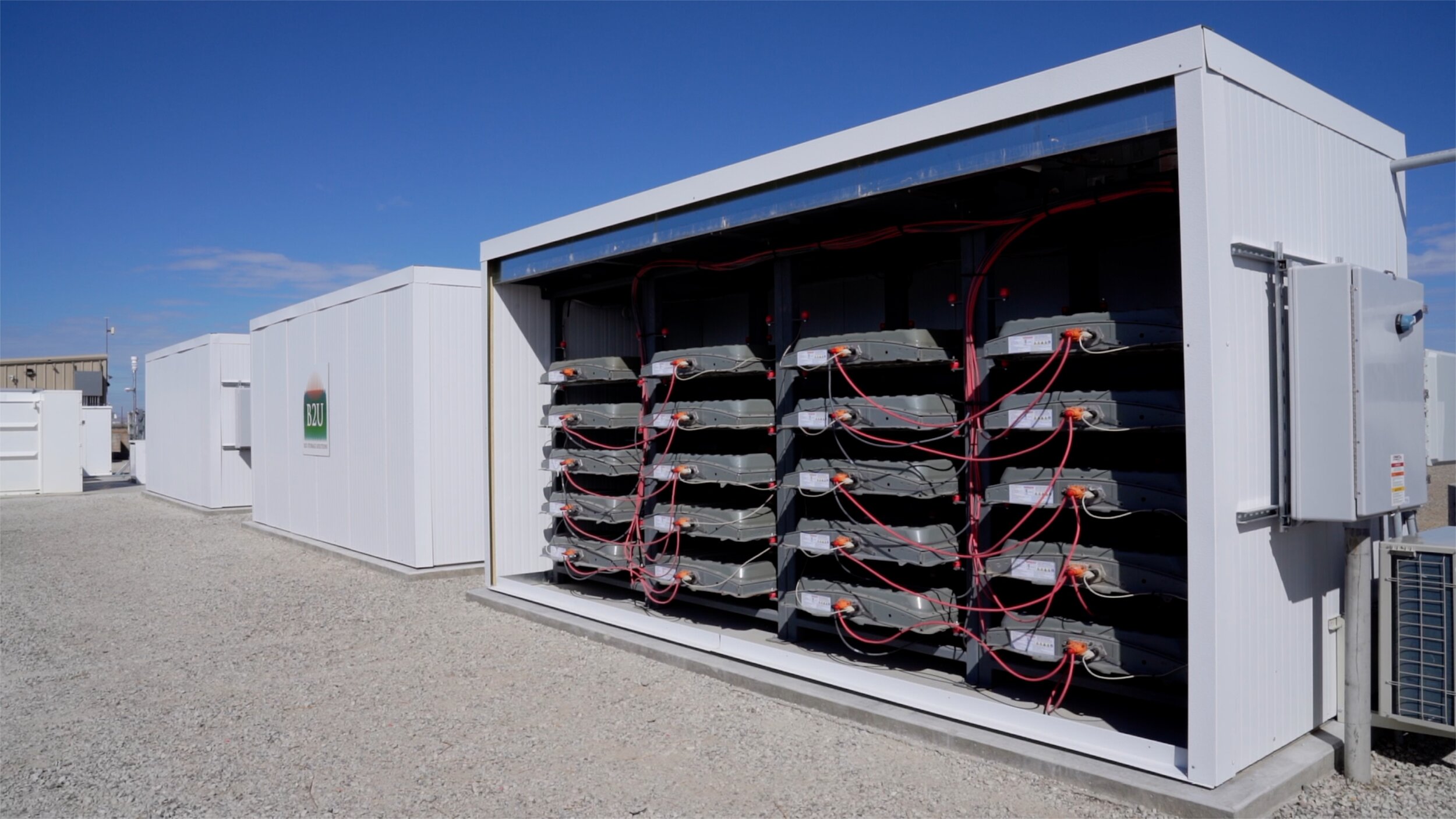This Southern California solar farm is using retired EV batteries for storing the power and then send to the grid when needed. This way the retired batteries can extend their usefulness for several…::A Southern California company is showing how repurposing EV batteries for stationary storage can extend their usefulness for several years.



The way lithium batteries work, they wear out less if you only discharge and charge them slightly. So a battery that is charged to 60%, discharged to 40%, and repeated like that will keep most of its capacity even after years of prolonged use. On the other hand, charging a battery quickly, until it is full, or discharging it until it is nearly empty will reduce its capacity over time.
A Tesla Model 3 has a battery capacity of at least 50 kWh. Even if it has lost half of its capacity, the 20% capacity difference between 60% and 40% charge, or more realistically, the 50% difference between 75% and 25%, still represents 12.5 kWh of capacity. Suppose you had an array of 1,000 such batteries. That would represent 12.5 MWh of storage capacity, enough to power ten thousand homes (at 1.2 kW each) for an hour. Certainly nothing to sneeze at.
This flies in the face of everything I thought I knew about charging my phone & laptop
Yea, back in the day, when first phones and laptops were coming out, the tech was different, and was better to fully discharge/charge the battery. Nowadays it’s the opposite, but the mith still survives
An easy analogy for batteries nowadays is to see them as an elastic completely relaxed at 50%. At 0% or 100% the elastic would be fully stretched. You want to avoid that to maximize its life
If you have an android there should be a “protect battery” mode that literally caps the charge at 85%
Thanks, I knew it was better to not fully charge lithium ion batteries, but I didn’t know Android had a setting for this. Just enabled it now.
I honestly thought once it got to 100% it stayed mains powered until unplugged to stop overcharging. Never realised 85% was optimal.
I think your right, its not going to keep cooking the battery. The problem is the battery doesn’t need to go over 85%. Your supposed to not let it go under 20 or over 85. Kind of hard to do.
The voltage of a Lipo corresponds to it’s charge level. So a Lipo at 4.2V (or in case of high voltage Lipos 4.35V) is full.
Up to ~80% of the charge, the lipo is charged by current limiting (basically, the voltage of the charging circuit raises so that it stays so much above the cell battery that it’s charging at a set current). This is the fast charging part of the charging process.
After the charging voltage reaches the maximum allowed cell voltage (4.2V/4.35V), the charging circuit cannot go above that voltage because it would risk overcharging and blowing up the cell. So the carging circuit holds the voltage at maximum level until the cell voltage catches up. Since the voltage difference shrinks with every bit of charge on the cell, so does the charging speed.
That’s why you only see “Charges the phone from 0-80% in X minutes” in the ads, and not 0-100%.
This means, that the charger in incapable of overcharging the phone.
But keeping the charger running even though it doesn’t charge the phone anymore wastes energy, so what they do once you reach 100% is that it will disable the charger until the voltage is down to 95%, when it will resume charging. That’s why it’s quite likely if you unplug the phone after charging overnight, that the battery is not at 100%, but slightly below.
The old rules applied to nickel batteries or whatever the last gen was called.
NiCd was the one with the bad memory effect that required full charging cycles. They where also really toxic which is why they are illegal in many countries now.
NiMh hardly had any memory effect left, but would degrade comparatively quickly.
Li-Ion/Li-Po is what we currently have. They don’t like to be full or empty for long times and like shallow charging cycles.
If you’re interested in more technical details on the topic, this site has tons of info.
I’ve seen some interesting use cases for EVs themselves as a form of energy storage. Not necessarily to discharge as a voltage regulation mechanism, but as a predictive load for evening daily swing.
What do you mean by that?
By daily swing I mean the difference between minimum (base load) and maximum (peak) MWh demand within a 24 hour window. Typically this means low period at night and high period in morning and late afternoon/evening. The types of generation and capabilities you have on the grid basically have to accommodate this demand swing while maintaining reliability. IE you can’t just run nuclear to provide for the peak because you can’t just turn it off when it’s not needed, stuff like that, voltage has to be regulated in real time to maintain the frequency of the grid.
With increasing transportation electrification people are largely charging their cars overnight, this is increasing the overnight demand and potentially raising the minimum base load and reducing the daily swing. This means you may not need as much capabilities to fill that gap, things like ramping up hydro (renewable but environmentally destructive) or gas (GHG emitting) to handle the swing and peaks. You can imagine if demand is always kept the same it would be much easier and more reliable so this is basically a way to get closer to that. Right now there’s a lot of tools like dispatchable generation, dispatchable loads, trading over interties to neighboring jurisdictions, load-shedding, and demand response programs where if large consumers alter their usage patterns in accordance with grid conditions they receive compensation.